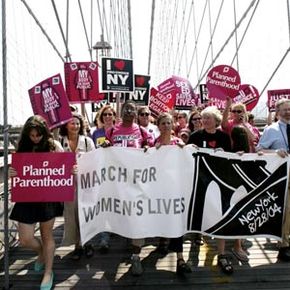"Planned Parenthood Federation of America is many things to many people." That line, found on Planned Parenthood's Web site, is directly followed by a list of the services that Planned Parenthood provides, indicating that people have many reasons to seek out the organization. As one of the country's leading providers of sexual and reproductive health, Planned Parenthood provides everything from pamphlets on sexuality to Pap smears to prophylactics. People who may not need Planned Parenthood's direct services rely upon the organization as a watchdog and a defender of women's rights.
While the line is seemingly meant to demonstrate the breadth of Planned Parenthood's work, it may also be a winking acknowledgement that those same services and stances are the things that make people see Planned Parenthood as a sign of moral degradation. To some, Planned Parenthood is essentially a government-funded abortionist that promotes sex to children.
Advertisement
What goes on in other people's bedrooms has long been an issue that divides people in the United States. What may bother many people about Planned Parenthood is that it operates on the assumption that sex will happen. Teenagers will have sex. Married people will have sex. Young singles will have sex with people they just met, and people will have sex with their long-term lovers, who may even be of the same gender. Some will be forced into a sexual encounter against their will if they are raped.
Now, that may not be how everyone would like the world to work, but that's the way Planned Parenthood sees the world working. And as the name implies, the organization believes that sexual acts shouldn't have to end in the birth of a child. Instead, children should be something that you can plan for by preventing conception. In case that option fails, Planned Parenthood upholds and supports a woman's legal right to choose an abortion by providing the operation. It also works to ensure that a person's reproductive organs are kept safe from disease and cancer with extensive testing services.
It's possible that you read the previous paragraph and felt that people shouldn't have the chance to opt out of the responsibilities of having sex -- most notably, raising a child. But regardless of personal beliefs, Planned Parenthood is a prominent health care provider in this country: One in four American women has used Planned Parenthood's services at some point in her life [source: Planned Parenthood]. Let's take a closer look at just what services are provided on the next page.
Advertisement






